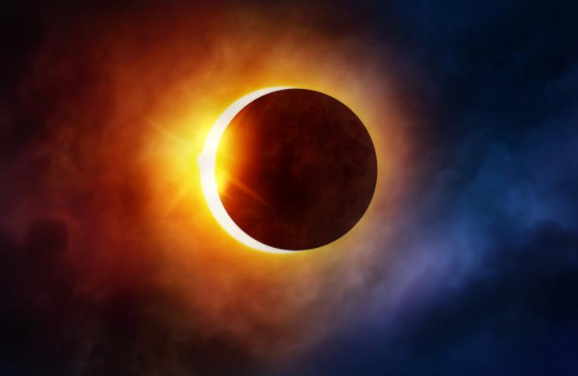
One of the most curious question raised and rising on Search engine related to Eclipse is How to watch Solar Eclipse. So today we will discuss it and we will educate you more on Solar Eclipse .
A solar eclipse take place when the moon comes in between Earth and the sun, and the moon creates a shadow over Earth. Solar eclipse can only take place at the time of new moon, when the moon passes directly between the sun and Earth and its shadows fall upon Earth’s surface.
What causes Solar Eclipse
The fact that an eclipse can occur at all is a coincidence of the divine mechanics and also obviously the time. Since the moon formed about 4.5 billion years ago, it has been slowly moving away from Earth by about 1.6 inches, or 4 centimeters per year.
Do you know when will the next solar eclipse occur – Watch Solar Eclipse
The next solar eclipse is a partial eclipse that will take place on 15th February, 2018 which will be visible only from parts of Antarctica, the Atlantic Ocean and southern South America.
A solar eclipse usually occurs when the disk of the moon appears to cross in front of the disk of the sun. A total solar eclipse just like the one that took place on 21st August, 2017 it occurs when the disk of the moon blocks 100 percent of the solar disk. Whereas a partial eclipse occurs when the moon covers only part of the sun.
Also the second partial eclipse will also occur in the year 2018 which will take place on 14th July and will be visible mainly over the ocean between Australia and Antarctica. Whereas the third solar eclipse of the year 2018 will take place on 11th August and will swing over the North Pole so it will be visible from northern Europe, northern Asia and parts of eastern Asia.
Read Also : Best Pre-existing Cancer Health Insurance For different Countries
The partial solar eclipse of 15th February, 2018, will begin over Antarctica and the surrounding ocean. It will move up and over South America, as well as Argentina and Chile, with some visibility as far north as Uruguay, Paraguay and Brazil.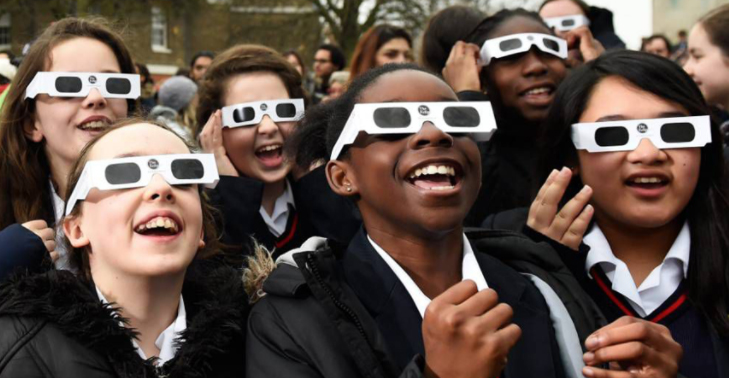
The February solar eclipse will be magnitude 0.599 at its maximum. Solar Eclipse magnitude is what portion of the sun’s diameter is covered by the moon. The point of maximum solar eclipse where observers will see the most coverage of the face of the sun will be on the coast of Antarctica, east of the Antarctic Peninsula, so the nearest inhabited areas will be the research bases.
More accessible is South America, which is another region of partial solar eclipse visibility. The further than south you go, you would notice the larger the covered portion of the sun will be. Observers in Montevideo, Uruguay, for e.g., will see a partial solar eclipse of magnitude 0.181, with a maximum of 8.8 percent of the sun’s face covered. People of Uruguay will see the moon touch the sun’s edge at 6:34 p.m. local time, and it will reach its greatest at 7:11 p.m. whereas the sun will set at 7:38 p.m., and the partial solar eclipse will end after that.
In Buenos Aires, the eclipse will be magnitude 0.166, with a coverage of about 7.7 percent. The eclipse will start at 6:36 p.m. local time and will reach a maximum at 7:12 p.m. Here, too, the sun will set at 7:46 p.m., before the partial solar eclipse is over.
Read Also : Tea Vs Coffee – The Best Energy Drink Motivating Healthy Life
To see the whole partial solar eclipse before sunset, you have to go further than south; one of the larger cities in the southern reaches of Argentina is Rio Gallegos, which will see 22 percent of the sun covered. The solar eclipse will begin at 5:45 p.m. local time, will reach maximum at 6:41 p.m. and will end at 7:33 p.m.
If you tend to be over enthusiastic than usual , i mean more adventurous and curious to chase eclipse then travel to Falkland Island and to a town there Stanley , where a magnitude 0.398 solar eclipse will occur ; meaning 28 percent of the sun will be obscured hidden by the moon.
The partial solar eclipse that will occur on 13th July, 2018, will take place almost completely over open water.Most of Antarctica will be experiencing “polar nights” as the partial solar eclipse will arrive during the southern hemisphere’s winter. At this time during , the sun does not rise for many day or weeks or even for several months at times but the partial solar eclipse will pass the illuminated edge of continent which is south of Australia. Sky watchers on the very southern coasts of Australia and New Zealand might catch brief views of the partial solar eclipse.
Read Also : Reduce Stress in Busy lifestyle with this Excellent Lifestyle Hacks
On 11th August, 2018, partial solar eclipse will touch many countries in the Northern Hemisphere. The solar eclipse will start out over the North Atlantic Ocean and Greenland so people there can watch Solar Eclipse that time , moving north and east so that the shadow at the same time moves toward Iceland, northern Europe and the northern Polar Regions where people there can watch Solar Eclipse. The shadow will be wide enough to cover most of the northern Russia from east to west after which it will come down into Mongolia, china and nearby areas where you can watch solar eclipse.
In a partial solar eclipse, the center of the moon’s shadow “misses” the Earth this is the reason why there’s no region of totality. As a result, a quirk of partial solar eclipses is that the sun is closest and nearest to the horizon at the point of the greatest eclipse. This is also a reason why the areas where you can see a partial solar eclipse occur tend to be near the poles.
How you can watch solar eclipse
Here is the most important section of the piece of write up that is exactly on how to watch solar eclipse
You can Watch Solar eclipse online
If the weather turns on you, or unfortunately you can’t get outside, then in that case the best option would be that you’ll have to go online.
Yea that’s true you can watch solar eclipse even at bad weather that too there you can watch solar eclipse online .
Solar filter for a camera or telescope
Next method to watch solar eclipse is by Solar filter for a camera or telescope .
Caution: This method is not for amateurs or kids, as just one careless instant can focus an ultra-bright ray of sunlight directly on your retina.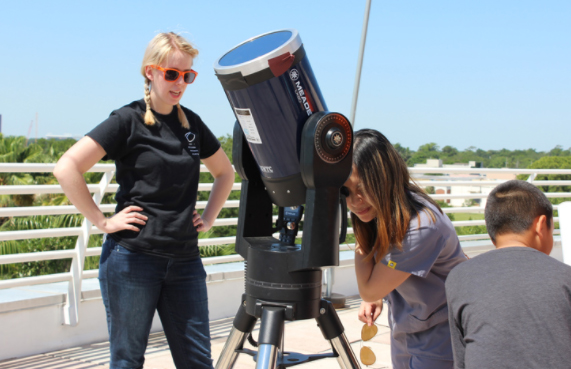
If you have any device like:
- DSLR camera
- Telescope
- Then you can order a special filter to pop onto the end of the lens or tube of your device. Be sure to consult NASA’s full list of good reputation manufacturers, sellers, and brands.
- As a proper filter will help to remove or minimize most of the sunlight, allowing you to see a magnified view of the solar eclipse also will even help take photos of the moon blocking the sun.
Read Also : Find the best radio station for iPod or iPhone FM Transmitter
Binoculars pointed at paper
It is recommended to never hold binoculars close near or up to your eyes and look at the sun as that’s a quick way to blind you.
Though, you can re purpose a pair by turning them into mini projectors .Just take a piece of paper, point the binoculars’ eyepieces toward it, and aim the other end of binoculars eyepieces towards the sun.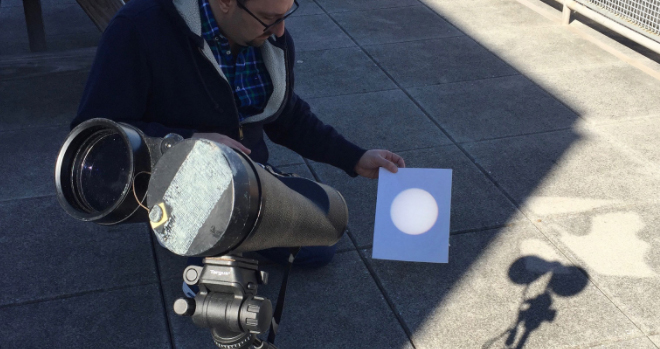
Adjust the binocular’s focal point so that it sharpens further back from the eyepieces that will create better clear projection.As Binoculars usually have focus knobs directly on the eyepieces, but some have them in the central joint.
Pinhole camera
Pinhole cameras is another safe way of watching the solar eclipse, that can get pretty advanced with boxes and tripods, but NASA’s Jet Propulsion Laboratory has advice for an incredibly simple version that you can build in just few minutes. How to watch solar eclipse via pinhole camera :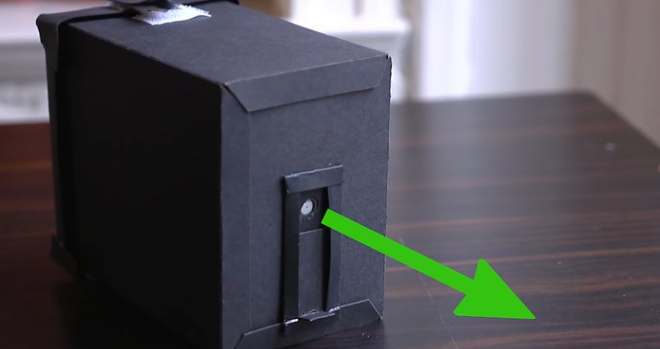
- Take some scissors
- Take tin foil
- Take a piece of thick card stock (or paper)
- Take Tape roll
- And a needle.
- Now cut a hole in the middle of one sheet of card stock
- Tape the edges of a tin foil section over it
- Then carefully pierce the center of the foil with the needle
- You’ve now successfully made a pinhole camera with the help of which you can see the solar eclipse easily.
- Hang your device over something that is in white color, for e.g. a piece of white paper
- Move it up and down until you figure out where the ideal focus point is.
Welder’s glass rated shade-12 or higher
Welder’s glasses are the safest that is designed to protect a worker’s eyes from bursts of UV light that acetylene torches give off. This can help them great to look at the sun.
NASA recommends shades 12, 13, or 14, with shade 12 being the least-opaque of the three grades. As many people find the Sun too bright even in a Shade 12 filters, moreover some people find the Sun too dim in a Shade 14 filter however Shade 13 filters are rare and can be hard to find.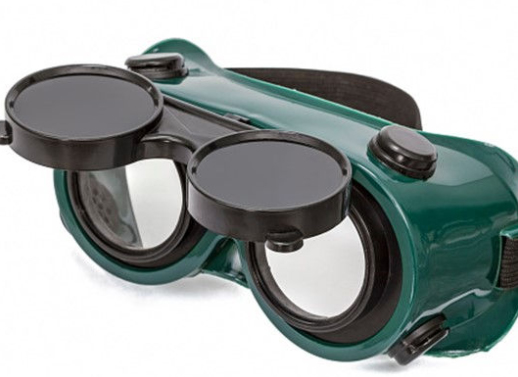
But the space agency urges extra concern if you find and want to use an older welder’s helmet or glass.
Read Also : Best Car Gadgets and Accessories for an Ideal Car
How to Watch Solar eclipse safely -Protect your eyes from Solar eclipse
If you’re planning to see the solar eclipse either in totality or even partially in person, you’ll need a few things to view it safely.
- Even though a solar eclipse effectively turns day into night, never look at the sun directly.
- Solar eclipses are particularly dangerous not because of anything special about the light during the solar eclipse, but because of the sudden changes in luminosity can cause retina damage even before your eyes have a chance to adapt, or before you have an opportunity to look away from it.
Don’ts of Watching Solar Eclipse – Precaution on Solar eclipse
Here is the precaution and warnings of watching solar eclipse . Take it serious while watching eclipse .
- Don’t directly look at the sun
Whether you are in the line of totality or outside of it, never look at the sun without appropriate solar filters during the partial phases of the solar eclipse.
- Don’t use sunglasses as a replacement for of solar eclipse glasses
Sunglasses do not really help to minimize the sunlight. Suitably certified eclipse glasses are 1, 00,000 times darker than usual sunglasses and they also filter out the harmful ultraviolet and infrared radiation.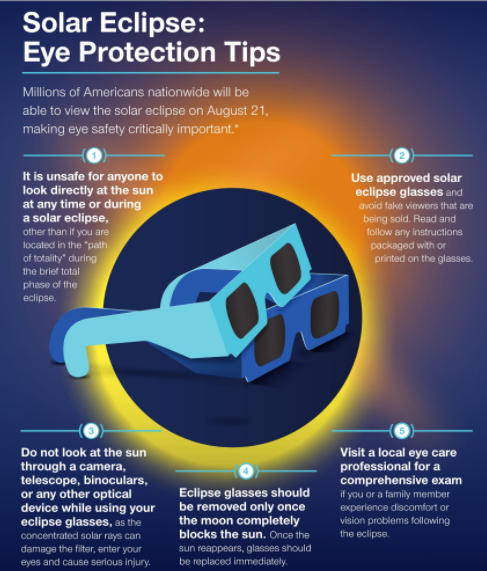
- Don’t look at the eclipse via binoculars / telescope if you are wearing wearing solar eclipse glasses
Looking at the sun through a telescope or binoculars while wearing solar eclipse glasses is extremely dangerous, because the intense sunlight coming through the optics of the telescope or binoculars could burn through the filter and damage your eyes. It is advised to look at the sun during the partial solar eclipse with binocular or telescopes that have specially designed solar filters.
Read Also : Streaming Services – Netflix Vs Prime Vs Hulu Vs Sling Vs Directv Now etc
- Don’t use a welder’s mask
Most likely a typical welder’s mask that a person might have in his/her house is not strong enough and is not recommended to be used during a solar eclipse. Only masks that have filters of shade 14 or 15 are viable.
Watch Solar eclipse Safely and share your experiences …

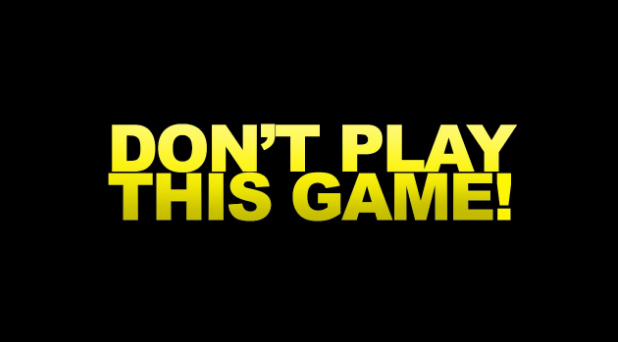












0 comments